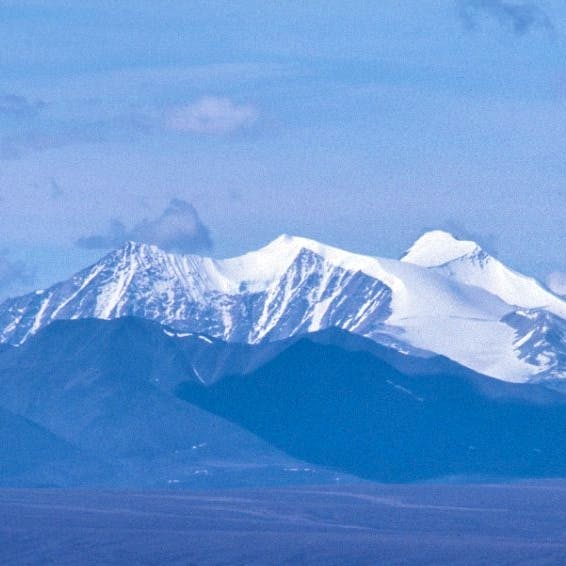Contact:
Susan Holmes, Wildlands Network, susan@wildlandsnetwork.org, 202-329-1553 cell
Leda Huta, Endangered Species Coalition - lhuta@endangered.org, 202-320-6467
Jennifer Witherspoon, Defenders of Wildlife, jwitherspoon@defenders.org, 202-772-0369
National Wildlife Corridor Legislation Introduced in House
Bill would restore habitat and protect America’s native wildlife
Washington, D.C. (December 7, 2016) — U.S. Rep. Don Beyer (D-VA-8th) today introduced legislation to help protect and restore native wildlife and create more resilient landscapes across America.
Wildlife corridors are important habitat areas that allow animals to move from one area of habitat to another for migration, establishing new territories, finding mates and adapting to the impacts of a changing climate.
The bill, supported by nationally recognized scientists, including Harvard’s E.O. Wilson, and 64 prominent conservation organizations nationwide, grants authority to the Department of the Interior to collaborate with other key agencies, states, tribes and private landowners to develop a strategy for a wildlife corridor system.
"The Wildlife Corridors Conservation Act would provide the most important step of any single piece of legislation at the present time in…saving large swaths of America’s wildlife and other fauna and flora,” said Wilson, who cited climate change and shifting locations of original environments as a primary threat to the nation’s biodiversity.
Wilson and other leading conservation scientists have signed a letter to Congress urging passage of the bill to “help conserve the interconnectedness of habitats of thousands of our nation’s native species, boosting their resilience to climate change and maintaining the health of our country’s diverse natural heritage.”
According to Susan Holmes, Policy Director for Wildlands Network, a group which has led the effort for a national system of connected wildlife habitats, “From America’s iconic grizzly bear to the beautiful monarch butterfly, wildlife needs to move across the landscape to survive. Corridors increase wildlife movement between habitat areas by approximately 50 percent compared to areas not connected by corridors,” she noted. “A system of national wildlife corridors would give many species a fighting chance to survive.”
The bill directs federal land and water management agencies to work together with states, tribes, local governments and private landowners to develop and manage national wildlife corridors consistent with existing laws and according to the habitat connectivity needs of native species. The bill also creates a publicly available National Native Species Habitats and Corridors GIS Database to inform corridor designation.
Representative Beyer, who has been concerned with finding ways to combine stakeholder collaboration with the critical need to arrest the rising species extinction rate, explained his bill in simple terms: “With roughly 1 in 5 animal and plant species in the U.S. at risk of extinction due to habitat loss, one of the simplest yet most effective things we can do is to provide them with ample opportunity to move.”
“Many of America’s most treasured wildlife, including the grizzly bear and the Florida panther, are threatened by habitat loss and fragmentation,” says Leda Huta, executive director of the Endangered Species Coalition. "This bill is a chance for America to be a global leader once again in addressing threats to wildlife."
Examples of wildlife in need of protected corridors include the pronghorn antelope, an important game species in the Southwest, whose survival depends upon the ability to migrate seasonally. With a designated corridor, pronghorn would be able to migrate south during the winter to access resources, like food, that are unavailable during the cold season. Even small insects like the monarch butterfly need protected corridors to migrate up to 3,000 miles in search of warmer climates in Mexico because they can’t withstand freezing temperatures. It can take 3-4 generations to complete a full migration and without protected places along the flyway for them to rest and reproduce, the species could be lost entirely.
“We appreciate Representative Beyer’s leadership in protecting America’s wildlife and their habitats through this strategic and collaborative approach to conservation planning,” said Mark Salvo, Vice President of Landscape Conservation at Defenders of Wildlife. “Connecting our public wildlands and waters is key to the survival of a diverse array of treasured species, from the grizzly, to the elk, to the monarch butterfly. The Wildlife Corridors Conservation Act is an investment in our natural heritage and the type of proactive wildlife stewardship that transcends political affiliation, speaking to the heart of our American values.”
###
Defenders of Wildlife is dedicated to the protection of all native animals and plants in their natural communities. With more than 1.2 million members and activists, Defenders of Wildlife is a leading advocate for innovative solutions to safeguard our wildlife heritage for generations to come. For more information, visit www.defenders.org and follow us on Twitter @DefendersNews.
For over 75 years, Defenders of Wildlife has remained dedicated to protecting all native animals and plants in their natural communities. With a nationwide network of nearly 2.1 million members and activists, Defenders of Wildlife is a leading advocate for innovative solutions to safeguard our wildlife for generations to come. To learn more, please visit https://defenders.org/newsroom or follow us on X @Defenders.
News

Defenders Slams Trump Interior Pick Burgum

